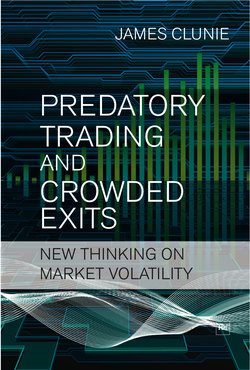Читать книгу Predatory Trading and Crowded Exits - James Clunie - Страница 9
На сайте Литреса книга снята с продажи.
The problem of simplifying assumptions
ОглавлениеSome asset-pricing models make a further, important simplifying assumption about the process of arbitrage. They assume that traders can short-sell securities as easily as they can buy. For example, a widely-taught asset pricing model, known as the arbitrage theory of capital asset pricing (Ross, 1976), assumes that there are no restrictions on short-sales, including full use of the short-sale proceeds. However, in practice, short-sellers must find securities to borrow, effectively pay securities lending fees and face collateralisation and margin requirements. These short-sale constraints limit the frequency and scope of arbitrage, and so could affect the price of assets.
So, we know that some models that seek to explain the pricing of assets make use of unrealistic simplifying assumptions.
Does this matter?
Are the predictions from such models accurate, or do they instead fail the ‘Friedman test’ that I mentioned earlier? In a canonical paper on short-selling constraints, Miller (1977) considers what happens to security prices if the two main assumptions discussed above are untrue at the same time.
While popular models such as the capital asset pricing model (see Sharpe, 1964) assume that investors have identical estimates of the expected return and probability distribution of returns from all securities, Miller suggests that investors in practice can have differing expectations about securities instead, due to uncertainty over future cash flows and the appropriate discount rate for an investment. He argues that when a divergence of opinion amongst investors is combined with barriers to short-selling, the price of a security is no longer set by the average investor, but instead by the beliefs of the most optimistic investors. Those investors with the most optimistic estimates of returns will own the securities, while pessimists and realists struggle to short-sell the overpriced asset because of constraints on short-selling. Miller concludes that
the presence of a substantial number of well informed investors will prevent there from being substantially undervalued securities, but there may be securities whose price has been bid up to excessive levels by an uninformed minority.
This provides a simple explanation for why some securities might trade at inflated prices. Even if informed traders or investors know the fair value of a security, other less-informed traders push the price beyond that level, and it is difficult to short-sell the security back to its fair price. Mis-pricing develops because of ambiguity over fair value; and arbitrageurs are unable to correct the anomaly if there are barriers to short-selling.
A number of researchers have investigated Miler’s idea. Although there is some dispute over its implications, Asquith et al. (2005) state
that it is now widely accepted that if short-selling is costly and there are heterogeneous investor beliefs, a stock can be overvalued and generate low subsequent returns.
For a trader, the lesson is simple – asset pricing models can help us understand how markets work, but where the model relies upon simplifying assumptions, the predictions from the models might not always be accurate. A good trader should understand both the predictions of the model and the limitations of the model. Without both, a trader will be vulnerable – even if this vulnerability takes years to be revealed.
